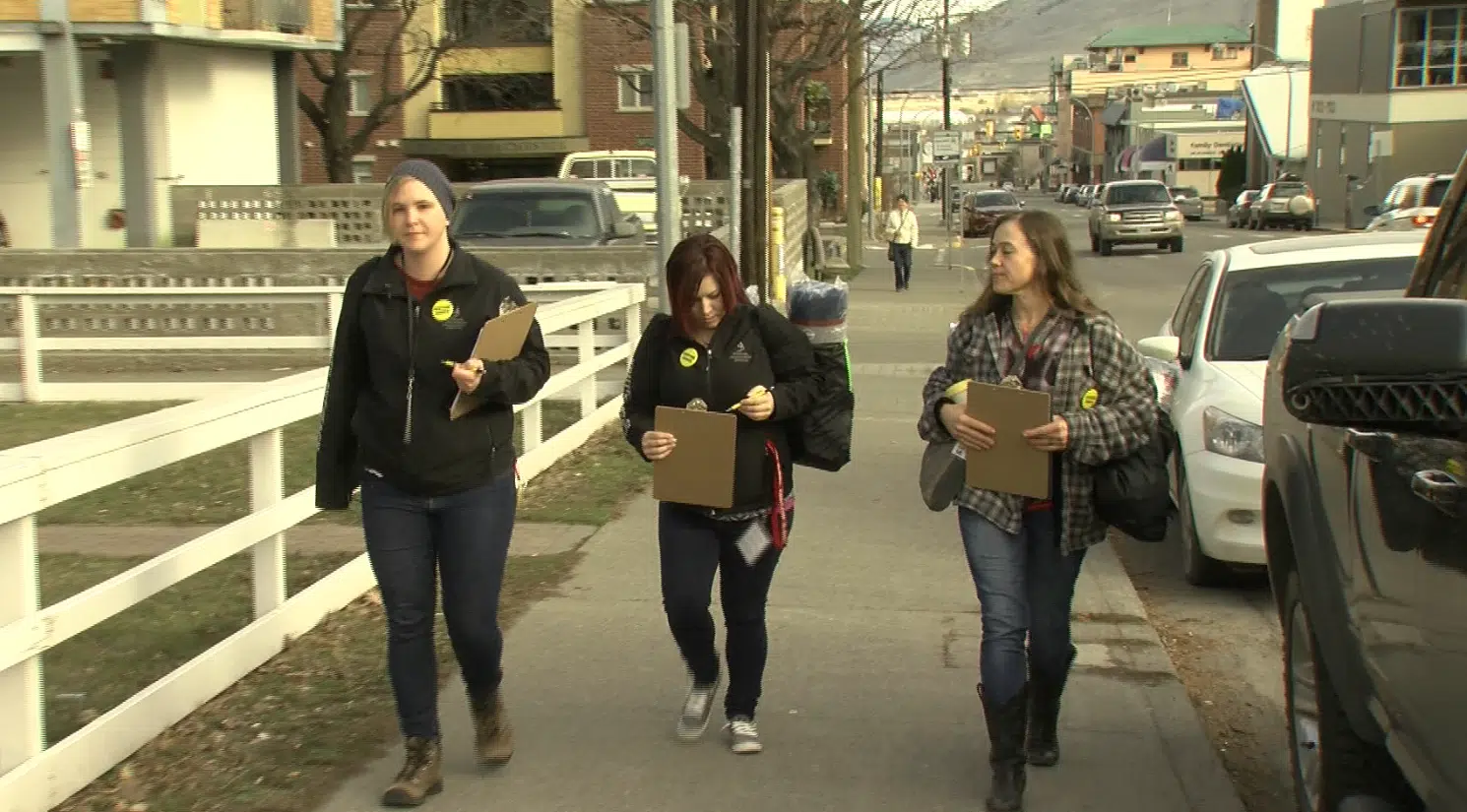
Volunteers take part in first national Point-in-Time homeless count in Kamloops
KAMLOOPS — Throughout March and April, 60 communities will participate in the national Point-in-Time homeless count.
On Wednesday, volunteers hit the streets of Kamloops to survey this city’s homeless populations.
Previously, the homeless count was organized by ASK Wellness. This was the first time the city participated in the national count.


